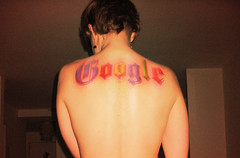Looking at new (or social) media, it is easy to see that there are some powerful forces driving change across our cultural, our social and even our political landscapes. These five impacts can be summarised, broadly as:
- Experts coming under pressure from new voices who are early adopters of new technology
- New organisations emerging to deal with the social, cultural and political changes
- There is a struggle to revise the social and legal norms — especially in relation to intellectual property
- The concepts of identity and community are transformed
- New forms of language come into being
- Educators are pressured to prepare their students for the newly emerging world
Now while this seems obvious, pause for a moment. This list comes from Elizabeth Eisenstein on the invention of the printing press, and while it speaks to us in our current state, these changes have actually been underway for hundreds of years.
Why is this important? Because the printing press … and for that matter, blogs, social networks, video and picture sharing tools, conversational and other "Web 2.0" sites are not just tools. They don’t just FACILITATE communication and interaction. They MEDIATE it. The impact of this is profound.
If the way that we understand the world is, in turn, mediated by it, then those brands that do NOT engage with new media are placed at a significant disadvantage. This goes beyond the question of whether your company or brand "should have a website" or a "blog", but whether it is important for you to be part of the web of signification that creates the worlds that we live in.
There is a great shift and a great debate still just beginning (remember, for all the joy and speed that comes with the Internet, we still buy books in record numbers). Can you and your brand afford to ignore these changes? Or worse — will you ignore the chance to engage with and SHAPE the future of media (and therefore our future lives)?
Given the ease with which you CAN engage, it’s not a question of how, but how much. Even dipping your toe in the water is a start. Begin here.
Oh, and if you want to go deeper, check out Michael Wesch’s presentation on Human Futures for Technology and Education. More power to you.






